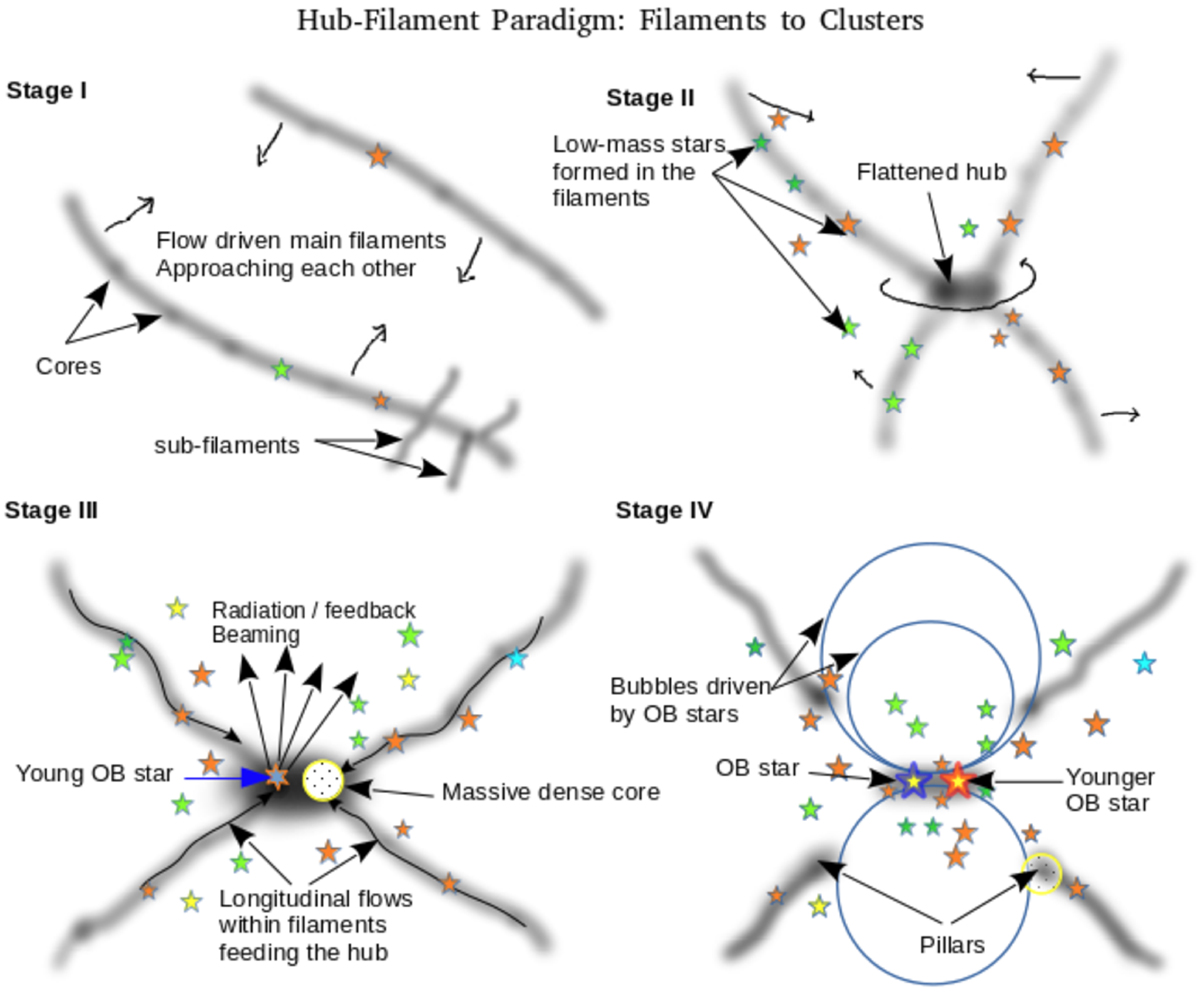Fig. 14

Filaments-to-clusters paradigm for star formation. Flow-driven filaments overlap to form a junction that is called a hub. The hub gains a twist as the overlap point is different from the centre of mass, and the density is enhanced due to the addition of filament densities. Low-mass stars can be ongoing before and during hub formation. The hub gravitational potential triggers and drives longitudinal flows bringing additional matter and further enhancing the density. Hub fragmentation results in a small cluster of stars; however, a pancake or sheet morphology often leads to near-equal mass fragmentation, especially under the influence of magnetic fields and radiative heating. Radiation pressure and ionisation feedback escapes through the inter-filamentary cavities by punching holes in the flattened hub. Finally, the expanding radiation bubbles can create bipolar shaped HII regions, burning out the composing filaments to produce tips that may be similar to the structures called pillars. The net result is a mass-segregated embedded cluster, with a mass function that is the sum of stars continuously created in the filaments and the massive stars formed in the hub.
Current usage metrics show cumulative count of Article Views (full-text article views including HTML views, PDF and ePub downloads, according to the available data) and Abstracts Views on Vision4Press platform.
Data correspond to usage on the plateform after 2015. The current usage metrics is available 48-96 hours after online publication and is updated daily on week days.
Initial download of the metrics may take a while.


